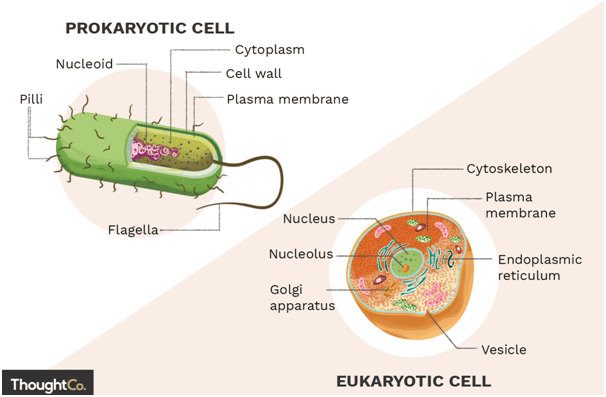How Prokaryotes led to eukaryotes
- Organisms on planet earth are broadly divided into prokaryotes and eukaryotes. The former arel unicellular, do not have any organelles such as mitochondria, and their DNA is not packaged into a nucleus.
- Eukaryotes have mitochondria, their DNA is packaged into a nucleus, and most of them are complex, multicellular beings.
- About 50 years ago, a subset of unicellular organisms, the Archaea, were shown to have a different line of descent as compared to bacteria.
- The two differ in the composition of their cell walls, and in the sequence of some of their genes.
- The term Archaea, was used because the first members of this domain were found living in extreme environments of very high temperatures or very high salt.
The endosymbionts
- One group of archaea were shown to have proteins that closely resembled eukaryotic proteins.
- These organisms are found in a geological formation where geothermally heated water is forced out of a ridge in the Atlantic Ocean floor at a depth of 2400 meters below sea level.
- Many other related members were later found in unusual ecosystems, and came to be collectively called the Asgard, which is the home of the Gods in Norse mythology.
- The mitochondria, which are the energy-generating organelles of eukaryotic cells, and the photosynthesizing chloroplasts found in plant cells, have evolved from free-living bacteria.
- The ancestor of mitochondria was a proteobacteria that was engulfed by an Asgard archaean organism. Descendants of this endosymbiotic union gave rise to animals, fungi and plants.
- In plants, the Asgard-mitochondrial union was followed by the intake of a photosynthesizing cyanobacterium, which became the chloroplast.
- A few years ago, we Indians had seen complicated mergers of public-sector banks, broughtin order to optimize their operations.
- In a similar vein, establishing a workable symbiotic relationship between two independent life forms poses many challenges.
Plants do it differently
- There was no need to retain two full sets of genes, so choices were made: for Information Technology (cell replication, etc.), archaean genes were retained; for operations and housekeeping (assembling proteins), bacterial genes were preferred.
- Over time, most genes of the organelle were transferred to the nucleus, perhaps a more efficient arrangement.
- The group of Rajan Sankaranarayanan at the CCMB has performed extensive studies on the reconfiguring of cellular processes in these endosymbiotic relationships.
- They compared animals and fungi with plants, where it is even more complicated as three gene sets were involved in the course of their evolution.
- Proteins are made up of amino acids. Nature uses only left-handed amino acids; the right-handed ones can be poisonous.
- The mechanism for discriminating ‘good’ from ‘bad’ is different for Asgards and bacteria.
- The paper shows that animals and fungi work their way around this discrepancy by forcing the mitochondria to change. Plants segregate the two policing machineries in the cytoplasm and in mitochondria.
| Practice Question
1. What are prokaryotes and eukaryotes? What is the main difference between them? |




